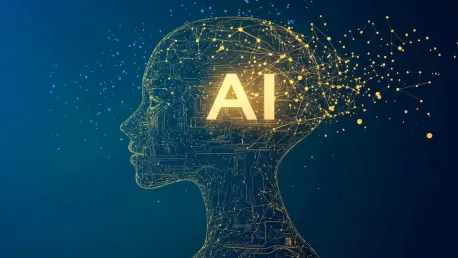Artificial intelligence (AI) is revolutionizing various sectors, and education is no exception. The integration of AI in teaching methods and student engagement is reshaping the traditional classroom experience. This article explores how AI can transform teaching methods and enhance student engagement, providing a comprehensive overview of its potential benefits and challenges. Educators and students alike are witnessing the transformative power of AI in personalizing learning, offering real-time feedback, and automating administrative tasks that have traditionally consumed valuable instructional time.
The Evolution of AI in Education
The use of AI in education has evolved significantly over the past few years. Initially, AI was met with skepticism, with concerns about its impact on academic integrity and the potential for skill loss among students. However, as AI technology has advanced, educators have begun to recognize its potential to enhance teaching methods and improve student engagement. AI can assist in personalizing learning experiences, providing real-time feedback, and automating administrative tasks. These capabilities allow educators to focus more on teaching and less on administrative duties, ultimately benefiting both teachers and students.
Educators have started leveraging AI for various purposes, from grading assignments to creating personalized learning plans tailored to individual students’ needs. The initial hesitation has given way to a more nuanced understanding of AI’s role in education. With the growing acceptance, schools are integrating AI tools that help bridge gaps in learning, ensuring no student is left behind. This shift marks a significant transformation in how educational institutions operate, leading to more efficient and effective teaching practices.
Personalized Learning Experiences
One of the most significant advantages of AI in education is its ability to personalize learning experiences. AI algorithms can analyze student data to identify individual learning styles, strengths, and weaknesses. This information can then be used to tailor educational content to meet each student’s unique needs. For example, AI-powered platforms can provide customized learning paths, adaptive assessments, and personalized feedback. This level of personalization can help students stay engaged and motivated, as they receive content that is relevant and challenging at their level.
Personalized learning experiences made possible by AI are reshaping how students interact with educational content. By providing tailored educational resources, AI ensures that each student receives the type of instruction that best suits their individual learning style. This approach not only addresses the diverse learning needs of students but also makes learning more efficient and enjoyable. As a result, students are more likely to achieve their full potential, leading to improved academic outcomes and greater satisfaction with their educational experience.
Real-Time Feedback and Assessment
AI can also provide real-time feedback and assessment, which is crucial for student learning and development. Traditional methods of assessment, such as exams and quizzes, often provide feedback long after the learning activity has taken place. In contrast, AI can offer immediate feedback, allowing students to understand their mistakes and learn from them promptly. AI-powered tools can analyze student responses and provide detailed feedback on their performance. This instant feedback can help students correct their errors and improve their understanding of the subject matter. Additionally, AI can track student progress over time, providing educators with valuable insights into their students’ learning journeys.
The ability to offer real-time feedback transforms the learning process, making it more dynamic and responsive. By identifying areas where students are struggling and providing immediate guidance, AI helps students build a stronger foundation in their studies. Educators can also use this data to adjust their teaching strategies, ensuring they address any learning gaps promptly. This approach not only enhances the learning experience for students but also empowers teachers to be more effective in their instructional methods.
Enhancing Student Engagement
Engaging students in the learning process is a constant challenge for educators. AI can help address this challenge by making learning more interactive and engaging. AI-powered tools, such as virtual tutors, chatbots, and interactive simulations, can create a more dynamic and immersive learning experience. For instance, virtual tutors can provide one-on-one support to students, answering their questions and guiding them through complex topics. Chatbots can facilitate discussions and provide instant assistance, making learning more accessible and engaging. Interactive simulations can bring abstract concepts to life, allowing students to explore and experiment in a virtual environment.
The use of AI to enhance student engagement opens up exciting possibilities for interactive and experiential learning. By leveraging AI tools, educators can create a more captivating learning environment that keeps students interested and motivated. These tools encourage active participation, critical thinking, and problem-solving, which are essential skills for academic success. As students become more engaged in their learning, they are more likely to retain information and develop a deeper understanding of the subject matter.
Automating Administrative Tasks
Administrative tasks, such as grading, attendance tracking, and scheduling, can be time-consuming for educators. AI can automate many of these tasks, freeing up valuable time for teachers to focus on instruction and student support. AI-powered grading systems can evaluate student work quickly and accurately, providing consistent and objective assessments. Attendance tracking systems can automatically record student attendance, reducing the administrative burden on teachers. Scheduling tools can optimize class schedules and manage resources efficiently, ensuring that students and teachers have the support they need.
The automation of administrative tasks through AI is a game-changer for educators. By taking over repetitive and time-consuming duties, AI allows teachers to dedicate more time to what truly matters: teaching and supporting their students. This shift not only improves efficiency within educational institutions but also enhances the overall quality of education. Teachers can focus on developing innovative teaching strategies, engaging with students on a deeper level, and providing individualized support, leading to a more effective and enriching educational experience.
Addressing Challenges and Ethical Considerations
While AI offers numerous benefits for education, it also presents several challenges and ethical considerations. One of the primary concerns is data privacy and security. AI systems rely on vast amounts of data to function effectively, raising questions about how this data is collected, stored, and used. Educators and institutions must ensure that student data is protected and used responsibly. Transparency in AI algorithms and decision-making processes is also essential to build trust and ensure fairness. Additionally, there is a need to address potential biases in AI systems, which can impact the accuracy and fairness of assessments and recommendations.
As AI becomes more integrated into education, it is crucial to address these ethical considerations proactively. Ensuring data privacy and security is paramount, and institutions must implement robust measures to protect student information. Transparency in how AI systems operate and make decisions will help build trust among educators, students, and parents. Addressing biases in AI algorithms is also critical to ensure that all students receive fair and unbiased assessments. By addressing these challenges, educators can harness the power of AI while maintaining ethical standards and protecting the rights of students.
Preparing Educators for AI Integration
For AI to be successfully integrated into education, educators must be adequately prepared and trained. Professional development programs can help teachers understand the potential of AI and how to use it effectively in their classrooms. These programs can cover topics such as AI literacy, ethical considerations, and practical applications of AI in teaching and learning. Collaboration between educators, AI experts, and policymakers is also crucial to ensure that AI tools are designed and implemented in ways that support educational goals. By working together, stakeholders can create a supportive environment for AI integration, fostering innovation and improving educational outcomes.
Preparing educators for AI integration is essential to ensure that they can leverage these tools effectively and ethically. Professional development programs should focus on building AI literacy, so teachers understand how AI works and how it can enhance their teaching practices. Ethical considerations, such as data privacy and bias, should also be addressed to ensure that AI is used responsibly. By fostering collaboration among educators, AI experts, and policymakers, the education sector can develop AI tools that are aligned with educational goals and priorities.
The Future of AI in Education
Artificial intelligence (AI) is bringing about significant changes in multiple fields, including education. The incorporation of AI into teaching methods and student engagement is transforming the traditional classroom experience. This article delves into the ways AI can revolutionize teaching and boost student engagement, offering an in-depth look at its potential benefits and challenges. Both educators and students are experiencing the transformative impact of AI, which personalizes learning, provides real-time feedback, and automates administrative tasks that once took up valuable teaching time.
AI has the potential to tailor the educational experience to each student’s individual needs, making it easier for teachers to address diverse learning styles. By analyzing data on student performance, AI can offer customized lesson plans and learning materials, ensuring that each student gets the most out of their education. Additionally, AI can provide instant feedback on assignments and quizzes, helping students understand areas where they need improvement immediately.
Moreover, AI can streamline administrative duties such as grading and attendance tracking, freeing up more time for teachers to focus on instruction and student interaction. Despite these advantages, the use of AI in education also presents challenges, including ensuring data privacy and addressing the potential for over-reliance on technology. However, the potential benefits make it a promising tool for the future of education.









